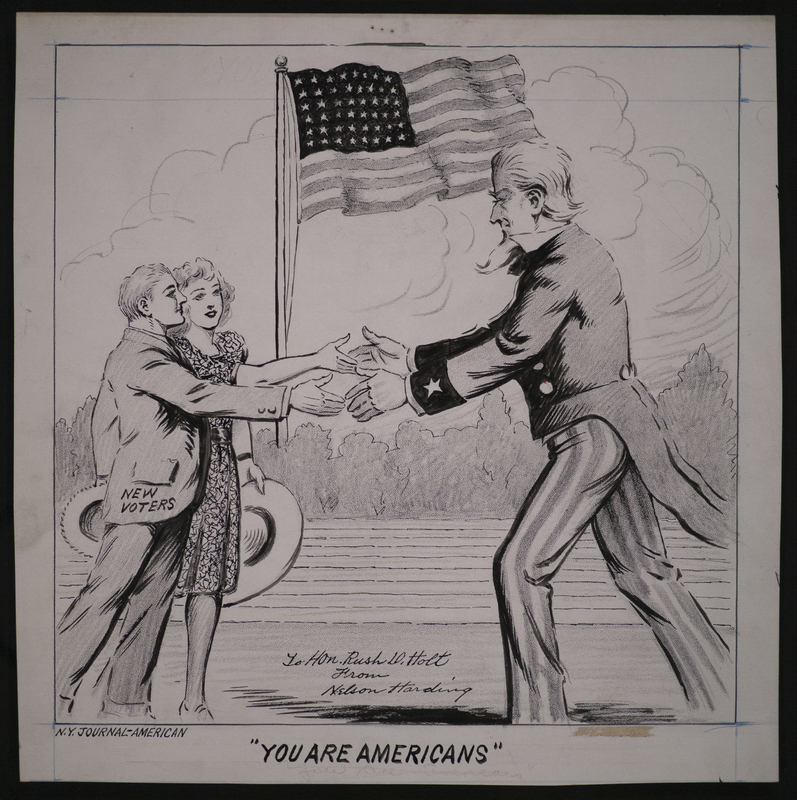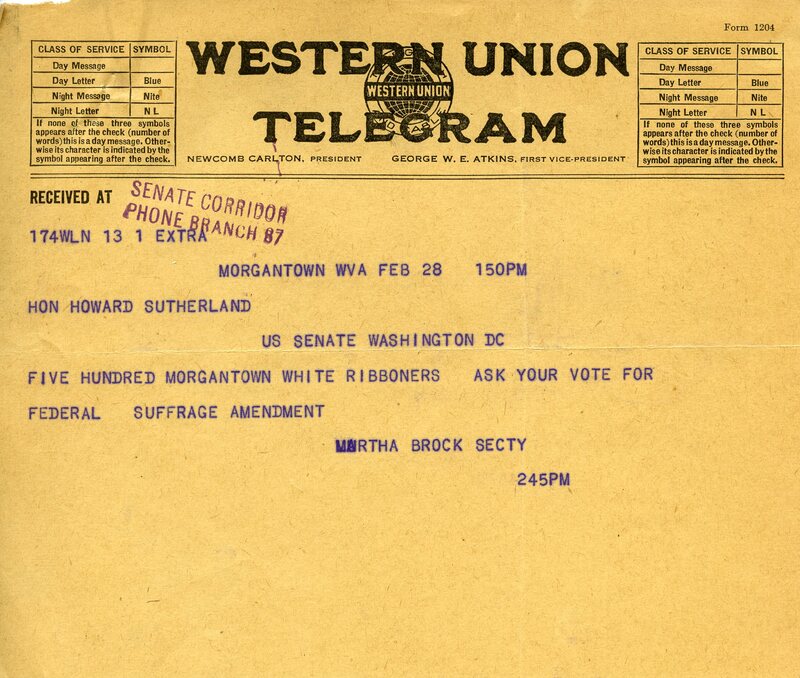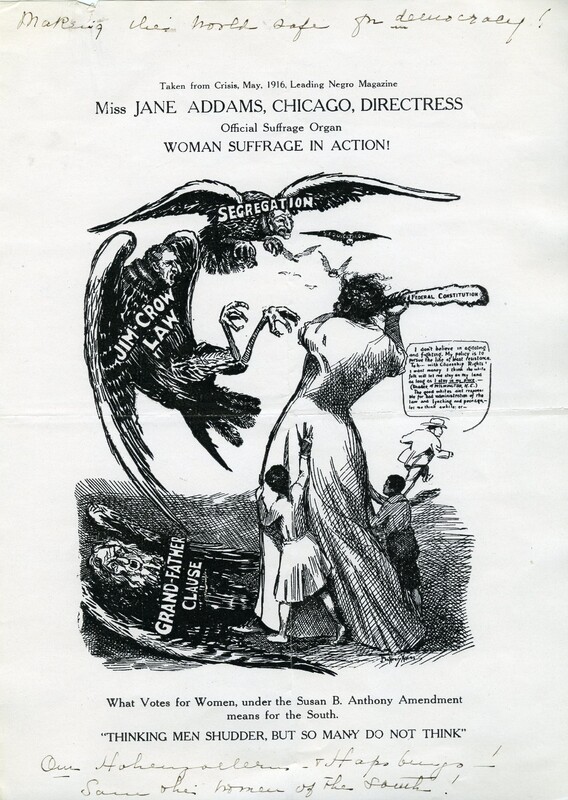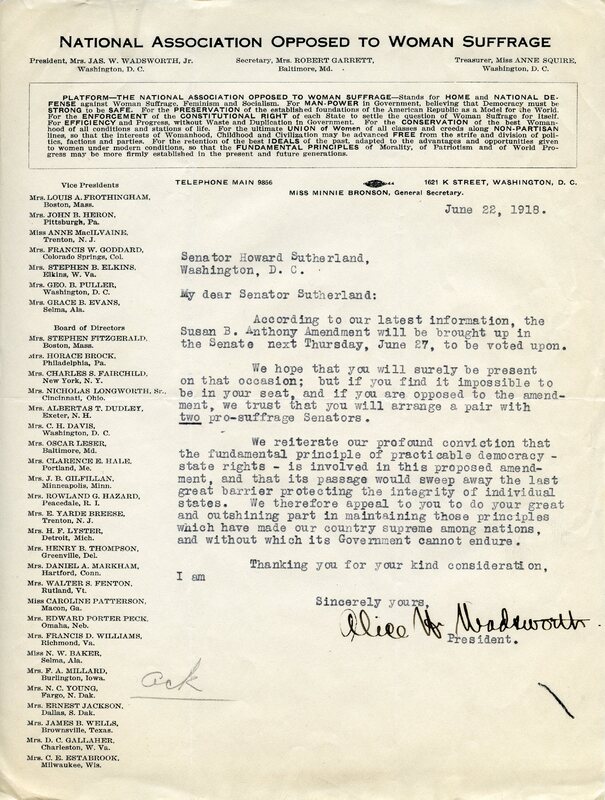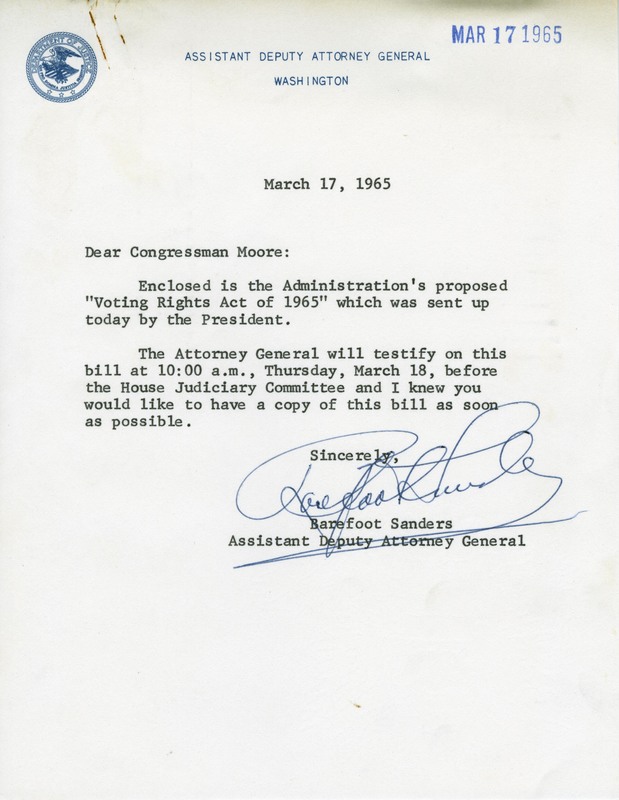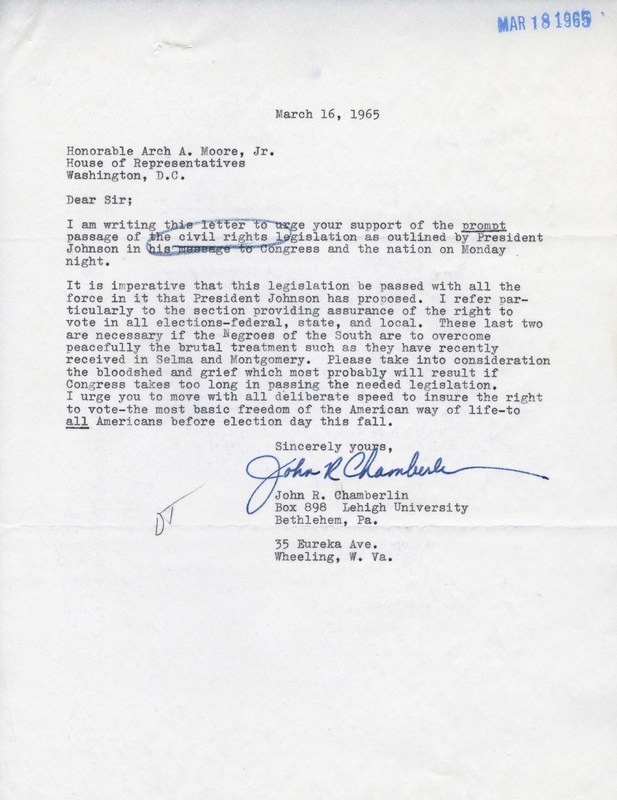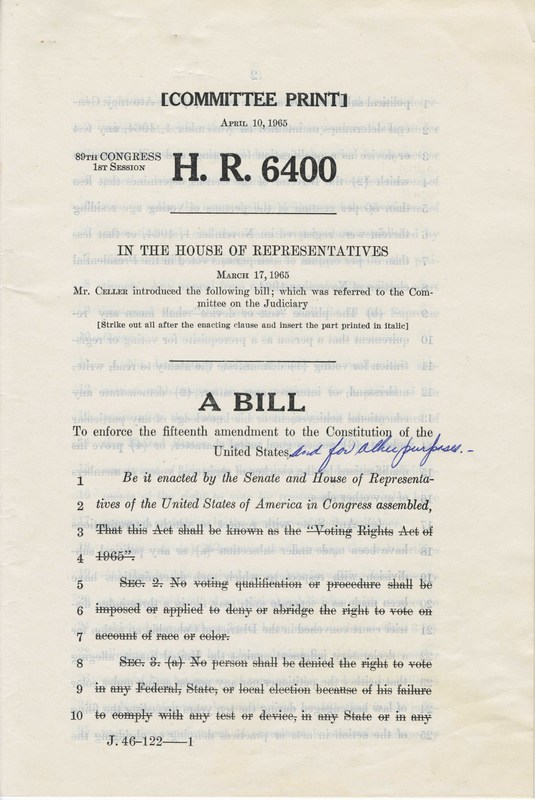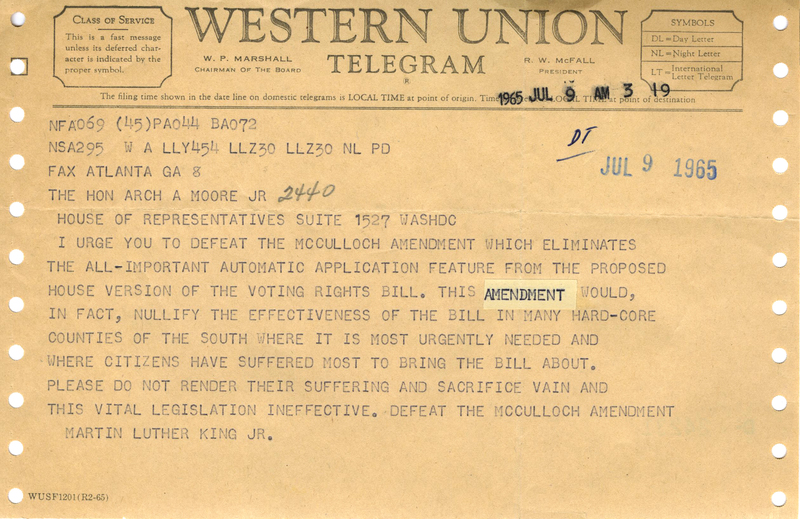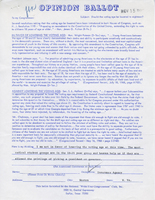America Votes
One of the primary methods Americans have for voicing their satisfaction, or dissatisfaction, with Congress is through voting. Every two years all 435 seats of the House of Representatives and one-third of the Senate must stand for election.
The Declaration of Independence stated that "Governments are instituted among Men, deriving their just Powers from the Consent of the Governed." Yet the Founders wrestled with questions of how Americans would consent to be governed and gave only a small group of people the right to suffrage. For nearly the first 100 years of America's history, only land owning white men age 21 or older had the right to vote.
In Article I of the Constitution, the founders gave states the responsbility of overseeing federal elections, but this arragenment often led to unfair voting practices.
Over time, groups of disenfranchised Americans have fought for their rights to vote, leading to constitutional amendments and federal laws that have expand voting rights. In 1870, the 15th Amendment to the Constitution allowed African American men voting rights, but many states continued to practice voter discrimination through poll taxes, literacy tests, and intimidation.
Women won the right to vote nationwide in 1920 with the ratification of the 19th Amendment, and in 1924, the Indian Citizenship Act granted Native Americans citizenship and voting rights. In 1972, the 26th Amendment lowered the voting age from 21 to 18.
Women's Suffrage
The first West Virginia referendum on women’s right to vote was introduced in the state in 1867, but it was unsuccessful. Women’s activism surged in the late 1880s and early 1890s, and through the next two decades, activists led disciplined and relentless efforts to secure voting rights through state referenda. In 1915, a women’s suffrage amendment passed the WV legislature, but voters rejected the resolution. Beginning in 1917, President Woodrow Wilson began urging Congress to pass a voting rights amendment, which it did in 1919. The 19th Amendment was ratified August 18, 1920. In February 1920, West Virginia became the 34th state to ratify.
The Voting Rights Act of 1965
Even after the passage of the Civil Rights Act of 1964, discriminatory practices continued to depress voter registration rates for African Americans living in the South. Although Senate leaders and the administration were quietly working on a voting rights bill, civil rights leaders were frustrated with the wait. On March 7, 1965, state troopers violently attacked peaceful civil rights marchers as they crossed the Edmund Pettus Bridge in Selma, Alabama. An outraged nation put pressure on Congress to pass a bill protecting the right to vote for all Americans.
Voting rights had broad, bipartisan support in the Senate, but it was filibustered by southern legislators. After 24 days, the Senate approved a debate-limiting cloture, only the second time in its history, and the second time in two years, that the Senate had stopped debate in order to vote on a civil rights bill.
Although the House Judiciary Committee reported a voting rights bill in early June, the House Committee on Rules kept the bill bottled up for nearly a month. After members initiated proceedings to have the bill discharged, the Rules Committee began hearings on June 24. After the conference committee reported the bill, the House approved the Voting Rights Act, and the Senate did so on the following day. On August 6, President Johnson signed the bill into law at the Capitol.
Twenty-Sixth Amendment
As the Vietnam War became more tumultuous and unpopular throughout the 1960s, many Americans demanded lowering the national voting age. Proponents argued that those old enough to be drafted for military service should be able to exercise the right to vote. Congress passed the 26th Amendment on March 23, 1971, and it was quickly ratified by three-fourths of state legislatures by July 1, 1971. It extended the right to vote to American citizens aged eighteen or older.

